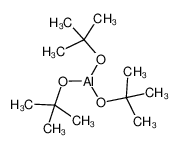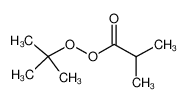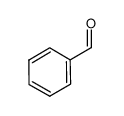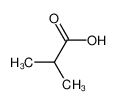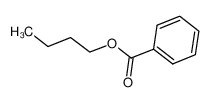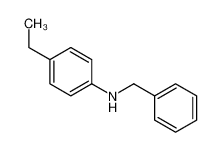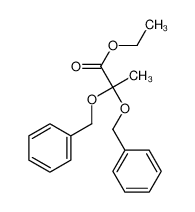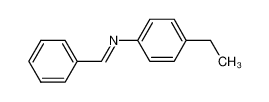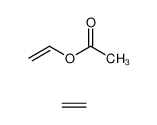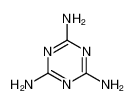| Product name | benzyl alcohol |
|---|
| Product number | - |
|---|---|
| Other names | Benzyl alcohol |
| Identified uses | For industry use only. Food additives |
|---|---|
| Uses advised against | no data available |
| Company | MOLBASE (Shanghai) Biotechnology Co., Ltd. |
|---|---|
| Address | Floor 4 & 5, Building 12, No. 1001 North Qinzhou Road, Xuhui District, Shanghai, China |
| Telephone | +86(21)64956998 |
| Fax | +86(21)54365166 |
| Emergency phone number | +86-400-6021-666 |
|---|---|
| Service hours | Monday to Friday, 9am-5pm (Standard time zone: UTC/GMT +8 hours). |
Acute toxicity - Oral, Category 4
Acute toxicity - Inhalation, Category 4
2.2 GHS label elements, including precautionary statements| Pictogram(s) | 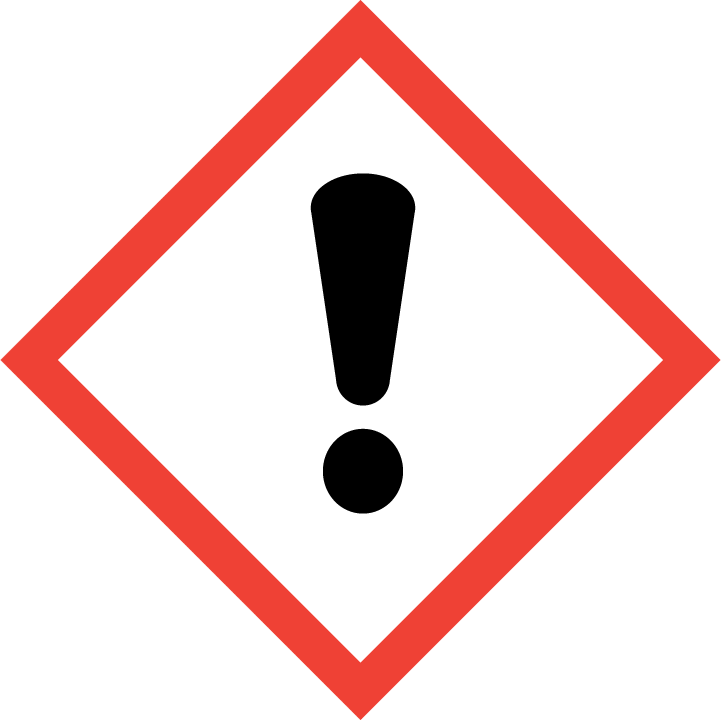 |
|---|---|
| Signal word | Warning |
| Hazard statement(s) | H302 Harmful if swallowed H332 Harmful if inhaled |
| Precautionary statement(s) | |
| Prevention | P264 Wash ... thoroughly after handling. P270 Do not eat, drink or smoke when using this product. P261 Avoid breathing dust/fume/gas/mist/vapours/spray. P271 Use only outdoors or in a well-ventilated area. |
| Response | P301+P312 IF SWALLOWED: Call a POISON CENTER/doctor/…if you feel unwell. P330 Rinse mouth. P304+P340 IF INHALED: Remove person to fresh air and keep comfortable for breathing. P312 Call a POISON CENTER/doctor/…if you feel unwell. |
| Storage | none |
| Disposal | P501 Dispose of contents/container to ... |
none
3.Composition/information on ingredients 3.1 Substances| Chemical name | Common names and synonyms | CAS number | EC number | Concentration |
|---|---|---|---|---|
| benzyl alcohol | benzyl alcohol | 100-51-6 | none | 100% |
Consult a physician. Show this safety data sheet to the doctor in attendance.
If inhaledFresh air, rest. Refer for medical attention.
In case of skin contactRemove contaminated clothes. First rinse with plenty of water for at least 15 minutes, then remove contaminated clothes and rinse again.
In case of eye contactFirst rinse with plenty of water for several minutes (remove contact lenses if easily possible), then refer for medical attention.
If swallowedRinse mouth. Refer for medical attention .
4.2 Most important symptoms/effects, acute and delayedInhalation of vapor may cause irritation of upper respiratory tract. Prolonged or excessive inhalation may result in headache, nausea, vomiting, and diarrhea. In severe cases, respiratory stimulation followed by respiratory and muscular paralysis, convulsions, narcosis and death may result. Ingestion may produce severe irritation of the gastrointestinal tract, followed by nausea, vomiting, cramps and diarrhea; tissue ulceration may result. Contact with eyes causes local irritation. Material can be absorbed through skin with anesthetic or irritant effect. (USCG, 1999)
4.3 Indication of immediate medical attention and special treatment needed, if necessaryEnhancement of elimination: Hemodialysis may enhance the elimination of benzyl alcohol and its metabolites and may also be useful to help correct severe metabolic acidosis. However, more cases involve prolonged repeated infusion, and the usefulness of dialysis in unknown.
5.Fire-fighting measures 5.1 Extinguishing media Suitable extinguishing mediaFoam, carbon dioxide, dry chem ...
5.2 Specific hazards arising from the chemicalThis chemical is combustible.
5.3 Special protective actions for fire-fightersWear self-contained breathing apparatus for firefighting if necessary.
6.Accidental release measures 6.1 Personal precautions, protective equipment and emergency proceduresUse personal protective equipment. Avoid dust formation. Avoid breathing vapours, mist or gas. Ensure adequate ventilation. Evacuate personnel to safe areas. Avoid breathing dust. For personal protection see section 8.
6.2 Environmental precautionsCollect leaking and spilled liquid in sealable containers as far as possible. Absorb remaining liquid in sand or inert absorbent. Then store and dispose of according to local regulations. Personal protection: filter respirator for organic gases and vapours adapted to the airborne concentration of the substance.
6.3 Methods and materials for containment and cleaning upSRP: Wastewater from contaminant suppression, cleaning of protective clothing/equipment, or contaminated sites should be contained and evaluated for subject chemical or decomposition product concentrations. Concentrations shall be lower than applicable environmental discharge or disposal criteria. Alternatively, pretreatment and/or discharge to a POTW is acceptable only after review by the governing authority. Due consideration shall be given to remediation worker exposure (inhalation, dermal and ingestion) as well as fate during treatment, transfer and disposal. If it is not practicable to manage the chemical in this fashion, it must meet Hazardous Material Criteria for disposal.
7.Handling and storage 7.1 Precautions for safe handlingAvoid contact with skin and eyes. Avoid formation of dust and aerosols. Avoid exposure - obtain special instructions before use.Provide appropriate exhaust ventilation at places where dust is formed. For precautions see section 2.2.
7.2 Conditions for safe storage, including any incompatibilitiesSeparated from strong oxidants.Benzyl alcohol is stored in stainless steel tanks. Because benzyl alcohol oxidizes readily, it is advisable to cover the surface of the liquid with nitrogen.
8.Exposure controls/personal protection 8.1 Control parameters Occupational Exposure limit valuesno data available
Biological limit valuesno data available
8.2 Appropriate engineering controlsHandle in accordance with good industrial hygiene and safety practice. Wash hands before breaks and at the end of workday.
8.3 Individual protection measures, such as personal protective equipment (PPE) Eye/face protectionSafety glasses with side-shields conforming to EN166. Use equipment for eye protection tested and approved under appropriate government standards such as NIOSH (US) or EN 166(EU).
Skin protectionWear impervious clothing. The type of protective equipment must be selected according to the concentration and amount of the dangerous substance at the specific workplace. Handle with gloves. Gloves must be inspected prior to use. Use proper glove removal technique(without touching glove's outer surface) to avoid skin contact with this product. Dispose of contaminated gloves after use in accordance with applicable laws and good laboratory practices. Wash and dry hands. The selected protective gloves have to satisfy the specifications of EU Directive 89/686/EEC and the standard EN 374 derived from it.
Respiratory protectionWear dust mask when handling large quantities.
Thermal hazardsno data available
9.Physical and chemical properties| Physical state | colourless liquid |
|---|---|
| Colour | Water-white liquid |
| Odour | Faint aromatic odor |
| Melting point/ freezing point | -15ºC |
| Boiling point or initial boiling point and boiling range | 203-205°C(lit.) |
| Flammability | Combustible. |
| Lower and upper explosion limit / flammability limit | no data available |
| Flash point | 94°C |
| Auto-ignition temperature | 436.11°C |
| Decomposition temperature | no data available |
| pH | A solution in water is neutral to litmus |
| Kinematic viscosity | 5.474 cP at 25°C; 2.760 cP at 50°C; 1.618 cP at 75°C; 1.055 cP at 100°C |
| Solubility | In water:4.29 g/100 mL (20 ºC) |
| Partition coefficient n-octanol/water (log value) | no data available |
| Vapour pressure | 13.3 mm Hg ( 100 °C) |
| Density and/or relative density | 1.045g/mLat 25°C(lit.) |
| Relative vapour density | 3.7 (vs air) |
| Particle characteristics | no data available |
no data available
10.2 Chemical stabilityOxidizes slowly, therefore remains stable for long time
10.3 Possibility of hazardous reactionsSlight, when exposed to heat or flame ...Attacks plastics. [Handling Chemicals Safely 1980. p. 236]. Acetyl bromide reacts violently with alcohols or water [Merck 11th ed. 1989]. Mixtures of alcohols with concentrated sulfuric acid and strong hydrogen peroxide can cause explosions. Example: an explosion will occur if dimethylbenzylcarbinol is added to 90% hydrogen peroxide then acidified with concentrated sulfuric acid. Mixtures of ethyl alcohol with concentrated hydrogen peroxide form powerful explosives. Mixtures of hydrogen peroxide and 1-phenyl-2-methyl propyl alcohol tend to explode if acidified with 70% sulfuric acid [Chem. Eng. News 45(43):73 1967; J, Org. Chem. 28:1893 1963]. Alkyl hypochlorites are violently explosive. They are readily obtained by reacting hypochlorous acid and alcohols either in aqueous solution or mixed aqueous-carbon tetrachloride solutions. Chlorine plus alcohols would similarly yield alkyl hypochlorites. They decompose in the cold and explode on exposure to sunlight or heat. Tertiary hypochlorites are less unstable than secondary or primary hypochlorites [NFPA 491 M 1991]. Base-catalysed reactions of isocyanates with alcohols should be carried out in inert solvents. Such reactions in the absence of solvents often occur with explosive violence [Wischmeyer 1969].
10.4 Conditions to avoidno data available
10.5 Incompatible materialsMixtures with sulfuric acid decompose expliosively at 180°C.
10.6 Hazardous decomposition productsWhen heated to decomposition it emits acrid smoke and fumes.
11.Toxicological information Acute toxicity- Oral: LD50 Rat oral 1230-3120 mg/kg bw
- Inhalation: LC100 Rat inhalation 200-300 ppm/8 hr
- Dermal: no data available
no data available
Serious eye damage/irritationno data available
Respiratory or skin sensitizationno data available
Germ cell mutagenicityno data available
Carcinogenicityno data available
Reproductive toxicityno data available
STOT-single exposureno data available
STOT-repeated exposureno data available
Aspiration hazardno data available
12.Ecological information 12.1 Toxicity- Toxicity to fish: LC50; Species: Pimephales promelas (fathead minnows); Conditions: static bioassay in Lake Superior water at 18-22°C; Concentration: 770 mg/L for 48 hr
- Toxicity to daphnia and other aquatic invertebrates: no data available
- Toxicity to algae: EC50; Species: Haematococcus pluvialis (Algae); Concentration: 2600mg/L for 24 hr; Effect: inhibition of photosynthesis /Conditions of bioassay not specified in source examined
- Toxicity to microorganisms: no data available
AEROBIC: Benzyl alcohol underwent 70% of theoretical biological oxygen demand in 5 days under aerobic conditions using an acclimated mixed microbial culture(1). At an initial concentration of 250 ppm, benzyl alcohol achieved 29% of the theoretical BOD after 12 hours in a sewage sludge acclimated to this compound, and 31% oxidation in a sludge acclimated to mandelic acid(2). At an initial concentration of 500 ppm, it achieved 52%, 42%, and 43% of the theoretical BOD in 12 hours using a settled sewage sludge acclimated to phenol, benzoic acid, and catechol, respectively(2). It is listed as a synthetic organic chemical easily biodegradable by biological sewage treatment(3). Benzyl alcohol at an initial concentration of 500 mg/L was shown to undergo rapid oxygen uptake under aerobic conditions when inoculated with municipal sewage sludge(4,5). Benzyl alcohol achieved 48% of the theoretical BOD in 5 days using a sewage sludge seed(6). Benzyl alcohol underwent 60.8% degradation using an industrial sludge inoculum under aerobic conditions in 5 days(7). Benzyl alcohol, present at 100 mg/L, reached 94% of its theoretical BOD in 2 weeks using an activated sludge inoculum at 30 mg/L in the Japanese MITI test(8). An experimentally-derived first-order aerobic biodegradation rate constant of 0.05 days was reported(9), corresponding to a half-life of about 13 days(SRC).
12.3 Bioaccumulative potentialAn estimated BCF of 1.4 was calculated in fish for benzyl alcohol(SRC), using a log Kow of 1.10(1) and a regression-derived equation(2). According to a classification scheme(3), this BCF suggests the potential for bioconcentration in aquatic organisms is low(SRC).
12.4 Mobility in soilExperimental Koc values for benzyl alcohol were <5 for three different soils; Apison (0.11% organic carbon), Fullerton (0.06% organic carbon), and Dormont (1.2% organic carbon)(1). An experimental Koc of 15 was determined for benzyl alcohol on a red-brown Australian soil (1.09% organic carbon)(2,3). A log Koc of 1.43 has also been reported(4). According to a classification scheme(5), these Koc values suggest that benzyl alcohol is expected to have very high mobility in soil.
12.5 Other adverse effectsno data available
13.Disposal considerations 13.1 Disposal methods ProductThe material can be disposed of by removal to a licensed chemical destruction plant or by controlled incineration with flue gas scrubbing. Do not contaminate water, foodstuffs, feed or seed by storage or disposal. Do not discharge to sewer systems.
Contaminated packagingContainers can be triply rinsed (or equivalent) and offered for recycling or reconditioning. Alternatively, the packaging can be punctured to make it unusable for other purposes and then be disposed of in a sanitary landfill. Controlled incineration with flue gas scrubbing is possible for combustible packaging materials.
14.Transport information 14.1 UN Number| ADR/RID: UN3334 | IMDG: UN3334 | IATA: UN3334 |
| ADR/RID: AVIATION REGULATED LIQUID, N.O.S. |
| IMDG: AVIATION REGULATED LIQUID, N.O.S. |
| IATA: AVIATION REGULATED LIQUID, N.O.S. |
| ADR/RID: 6.1 | IMDG: 6.1 | IATA: 6.1 |
| ADR/RID: III | IMDG: III | IATA: III |
| ADR/RID: no | IMDG: no | IATA: no |
no data available
14.7 Transport in bulk according to Annex II of MARPOL 73/78 and the IBC Codeno data available
15.Regulatory information 15.1 Safety, health and environmental regulations specific for the product in question| Chemical name | Common names and synonyms | CAS number | EC number |
|---|---|---|---|
| benzyl alcohol | benzyl alcohol | 100-51-6 | none |
| European Inventory of Existing Commercial Chemical Substances (EINECS) | Listed. | ||
| EC Inventory | Listed. | ||
| United States Toxic Substances Control Act (TSCA) Inventory | Listed. | ||
| China Catalog of Hazardous chemicals 2015 | Not Listed. | ||
| New Zealand Inventory of Chemicals (NZIoC) | Listed. | ||
| Philippines Inventory of Chemicals and Chemical Substances (PICCS) | Listed. | ||
| Vietnam National Chemical Inventory | Listed. | ||
| Chinese Chemical Inventory of Existing Chemical Substances (China IECSC) | Listed. | ||
| Creation Date | Aug 12, 2017 |
|---|---|
| Revision Date | Aug 12, 2017 |
- CAS: Chemical Abstracts Service
- ADR: European Agreement concerning the International Carriage of Dangerous Goods by Road
- RID: Regulation concerning the International Carriage of Dangerous Goods by Rail
- IMDG: International Maritime Dangerous Goods
- IATA: International Air Transportation Association
- TWA: Time Weighted Average
- STEL: Short term exposure limit
- LC50: Lethal Concentration 50%
- LD50: Lethal Dose 50%
- EC50: Effective Concentration 50%
- IPCS - The International Chemical Safety Cards (ICSC), website: http://www.ilo.org/dyn/icsc/showcard.home
- HSDB - Hazardous Substances Data Bank, website: https://toxnet.nlm.nih.gov/newtoxnet/hsdb.htm
- IARC - International Agency for Research on Cancer, website: http://www.iarc.fr/
- eChemPortal - The Global Portal to Information on Chemical Substances by OECD, website: http://www.echemportal.org/echemportal/index?pageID=0&request_locale=en
- CAMEO Chemicals, website: http://cameochemicals.noaa.gov/search/simple
- ChemIDplus, website: http://chem.sis.nlm.nih.gov/chemidplus/chemidlite.jsp
- ERG - Emergency Response Guidebook by U.S. Department of Transportation, website: http://www.phmsa.dot.gov/hazmat/library/erg
- Germany GESTIS-database on hazard substance, website: http://www.dguv.de/ifa/gestis/gestis-stoffdatenbank/index-2.jsp
- ECHA - European Chemicals Agency, website: https://echa.europa.eu/








